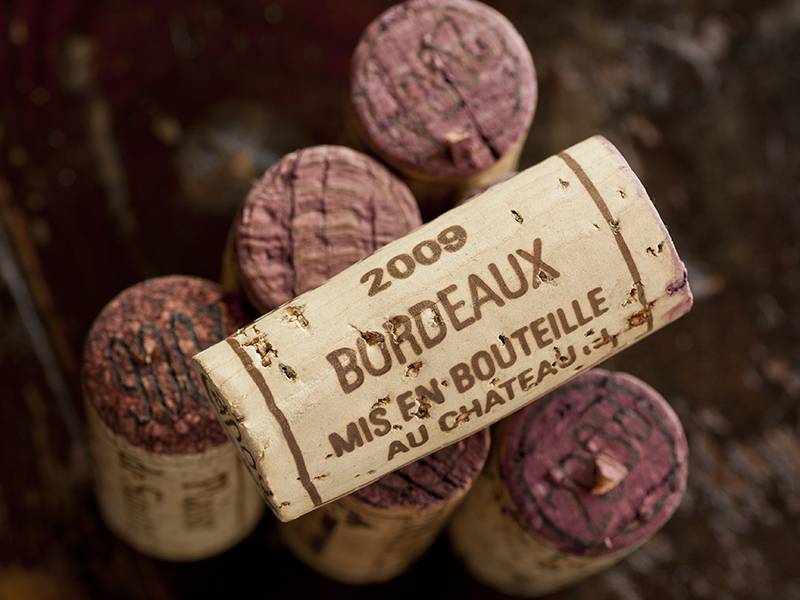A Bit about Bordeaux

Bordeaux is one of the largest, long lived, and most prestigious wine regions in the world.
It produces some of the most expensive, high quality wines on the market year after year. Based on its reputation, many people buy Bordeaux wines en primeur, meaning they buy wines years before they are finished and released.
History
Bordeaux’s location along rivers that lead to the Atlantic helped make it an important wine region very early on. With easy access to the ocean, wines could easily be shipped to other countries. During the 12th to 15th centuries, the area was under English control following the marriage of Eleanore of Aquitaine to King Henry II. As a result, England became one of the biggest importers of Bordeaux wine, which they called Claret.
Another large importer of Bordeaux wines was the Dutch. In an effort to make it easier to transport wines by road, the Dutch drained the swampy regions of what is now the northern portion of the Left Bank. In addition to improving transportation, this created more usable land for planting grapes and created one of the more acclaimed regions of Bordeaux.
The Classification of 1855 is a defining moment in Bordeaux history that still impacts the price and prestige of Bordeaux wine today. The classification created tiers of wines (First Growth, Second Growth, etc.) and was meant to indicate to consumers which wines were best and worthy of higher prices. The original four First Growth Chateaus for red wine (Lafite Rothschild, Margaux, Latour and Haut-Brion) still retain that designation to this day. Since the creation of this classification, only one Chateau, Mouton-Rothschild, has been elevated from Second Growth to First Growth for red wine. The classification only applied to Left Bank wines since they were considered the better wines of the time. Since then, other classifications have been established for Right Bank wines.
Geography
In the middle of Bordeaux, The Dordogne and Garonne rivers merge to feed the Gironde River, which flows out to the Atlantic Ocean. The area between the Dordogne and Garonne Rivers is called Entre deux Mers (“between two seas”). If you are facing north, the left side of the Gironde and Dordogne Rivers is referred to as the “Left Bank”. The area to the right of the Gironde and Garonne Rivers is called the “Right Bank”.
Different parts of Bordeaux have different soil. The Left Bank has more gravel and limestone. In fact, the area of the Left Bank known as Graves is so named because of the gravely soil. This type of soil drains better and radiates heat helping the grapes reach full ripeness. Cabernet Sauvignon tends to grow better in this soil since it requires more time and heat to fully ripen. Other parts of Bordeaux have more clay-based soils. These soils do not drain as well and retain the cooler temperatures. Merlot tends to grow better in this soil.
Wines
Bordeaux is most famous for red blends made from a combination of Cabernet Sauvignon, Merlot, Cabernet Franc, Petit Verdot and Malbec. Carmenere is also technically allowed, but is rarely used. Wines from the Left Bank tend to contain more Cabernet Sauvignon while wines from the Right Bank and Entre deux Mers tend to contain more Merlot. Some of the most prestigious and well known areas include Medoc and Graves on the Left Bank and St. Emilion and Pomerol on the Right Bank.
While red wines are what Bordeaux is most known for, they do also produce dry white wines and sweet white wines. Dry Bordeaux Blanc wines predominantly consist of Sauvignon Blanc and Semillon. The Sauvignon Blanc provides the high acidity with citrus and mineral flavors. Semillon softens the acidity and brings stone fruit and floral notes to the mix. These wines are mostly produced in the southern portion of the Left Bank and in Entre deux Mers.
Sauternes is a famous style of sweet wine produced in Bordeaux and has been called “hedonism in a glass”. Also made from a combination of Semillon and Sauvignon Blanc, this rich viscous style of wine is produced from late-harvest grapes that have been affected by a fungus called Botrytis, or “noble rot”. The Botrytis causes the grape juice to have a very distinct honey-like flavor and aroma. Sauternes wines have long been recognized for their quality and were included in the 1855 Classification. Chateau Yquem was given the status of First Growth in 1855 for their sweet Sauternes wines. Eleven more Chateaus have been promoted to First Growth for Sauternes over the years.

Comments
Be the first to comment...